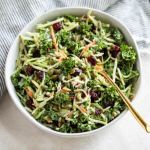- Like
- SHARE
- Digg
- Del
- Tumblr
- VKontakte
- Flattr
- Buffer
- Love This
- Save
- Odnoklassniki
- Meneame
- Blogger
- Amazon
- Yahoo Mail
- Gmail
- AOL
- Newsvine
- HackerNews
- Evernote
- MySpace
- Mail.ru
- Viadeo
- Line
- Comments
- Yummly
- SMS
- Viber
- Telegram
- JOIN
- Skype
- Facebook Messenger
- Kakao
- LiveJournal
- Yammer
- Edgar
- Fintel
- Mix
- Instapaper
- Copy Link
Back in the 1960s when I was an aspiring jazz musician, sliders were one of my favorite foods. Only they weren’t called “sliders” back then—they were called “White Castle.” These scrumptious little mystery meat burgers with the grease-soaked buns and the little pickle in the middle were the most delicious things ever, and I always looked forward to picking up a box on the way home from a gig at 3 a.m.
That was then. And to paraphrase a cigarette commercial from those same days, sliders “have come a long way, baby!” These modern-day Asian Sliders, for instance, are an upgrade from your typical “labor day burgers” in several ways. For one thing, they’re made from turkey, not beef. For another, they’re not greasy at all. They’re also not grilled at high temperatures, which is definitely a good thing because high-temperature grilling and charring can produce carcinogenic compounds. Finally, they’re seasoned with incredibly healthy spices such as ginger and sesame seeds—and to top it off, they’re baked!
As great as protein and healthy fat are, there’s one dietary ingredient they’re lacking: fiber. But not this burger. The imaginative addition of ½ cup of rolled oats adds 4 grams of fiber. Not exactly the equivalent of a cup of black beans, but still more fiber than the average burger. And for even more fiber (and flavor!), I highly recommend the avocado option.
Notes from the Clean Food Coach:
These sliders are great with lettuce and avocado on whole wheat slider buns, or sliced and rolled into whole grain wraps. They’re also tasty chopped into a fresh green salad if you want to avoid the carb hit from bread.
Featured Ingredient: Black Sesame Seeds
The sesame seed has been around a long time, at least since the days of The Thousand and One Arabian Nights. In fact, sesame is the oldest known plant grown for its seeds and oil, and is especially valued in Eastern, Mediterranean, and African cultures. Sesame seeds are about 50–60 percent oil, and much of that oil contains sesamin and sesamolin, two important members of the lignan family of polyphenols (plant chemicals that are really good for you). When the seeds are refined (as in the making of sesame oil), two other phenolic antioxidants—sesamol and sesaminol—are formed.
But you don’t need to know all the technical names of the lignan family to understand that these plant chemicals have major health benefits. Sesame seed lignans—including the aforementioned sesamin and sesaminol—enhance vitamin E’s absorption and availability, improve lipid profiles, and help normalize blood pressure. Animal studies show that sesame lignans enhance fat burning by increasing the activity of several liver enzymes that break down fatty acids.
Cholesterol and sesame seeds
If you’re familiar with my book The Great Cholesterol Myth, you know that I’m not a fan of using cholesterol as the ultimate marker for heart disease risk. So I’m loath to tout the “cholesterol-lowering” properties of any food or supplement because I’m not at all sure that lowering cholesterol is the same as lowering the risk for heart disease. That aside, it’s worth noting that sesame lignans do help reduce cholesterol. In a study published in the Journal of Lipid Research, sesamin lowered both serum (blood) and liver cholesterol levels. The researchers suggested that sesamin deserves further study as a “possible hypocholesterolemic agent of natural origin.” And in a study in the Journal of Nutrition, 50 grams of sesame seed powder taken daily for five weeks improved total cholesterol, LDL (“bad”) cholesterol, cholesterol ratio, and antioxidant status in postmenopausal women. The researchers noted some improvements in sex hormone status as well, and suggested a benefit of sesame for postmenopausal women.
Nutrient profile
Sesame seeds are very high in calcium, but much of it is bound to oxalic acid, making it less bioavailable than other forms of calcium. In parts of Japan, whole sesame seeds are prepared as a condiment known as gomasio, made by toasting whole sesame seeds with unrefined sea salt at high temperatures. This process may improve the assimilation of calcium by getting rid of the oxalates.
Calcium aside, sesame seeds are a rich source of minerals, fiber, and protein. Two tablespoons of seeds contain 35 percent of the Daily Value for copper, 2 grams of fiber, and 3 grams of protein—more protein than any other nut or seed—plus other nutrients including iron, magnesium, phosphorus, potassium, and manganese.
You can really enhance the nutty flavor of sesame seeds by toasting them in a dry skillet over medium heat until they’re golden brown. They come in shades of black, brown, and yellow as well as the more common beige variety. The black seeds have the strongest flavor.
Tahini is made from hulled sesame seeds and is, therefore, a more refined product, though still delicious. Other traditional sesame-based dishes include hummus, a Middle Eastern appetizer made of ground chickpeas, garlic, and tahini; and baba ghanoush, which has a base of roasted eggplant seasoned with tahini, lemon juice, garlic, and salt.
Click here for the Asian Sliders recipe.


